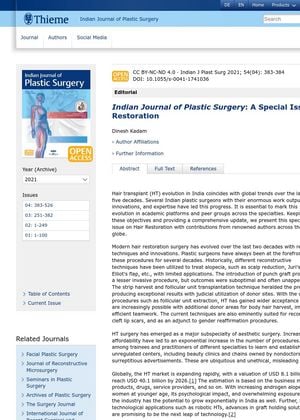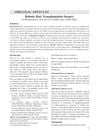Indian Journal of Plastic Surgery: A Special Issue on Hair Restoration
October 2021
in “
Indian Journal of Plastic Surgery
”

TLDR Hair transplant techniques have improved and become less invasive over time, but there are concerns about unregulated centers. The market is growing, with potential for more growth in India due to increasing hair loss cases. New technologies like robotic transplants are promising for the future. Surgeons are encouraged to prioritize patient safety and understand the science behind their techniques.
The evolution of hair transplant (HT) in India has been in line with global trends over the past five decades, with Indian plastic surgeons leading the progress through their work, innovations, and expertise. Modern hair restoration surgery has evolved significantly over the last two decades, with the introduction of less invasive procedures like follicular unit extraction and micrografting, leading to wider acceptance of HT globally. However, the industry faces challenges from unregulated centers offering HT, which can mislead patients. The global HT market, valued at USD 8.1 billion in 2019, is expected to reach USD 40.1 billion by 2026. The industry in India also has potential for exponential growth due to increasing cases of androgen alopecia in younger individuals and the psychological impact of hair loss. Newer technological applications such as robotic HTs and advances in graft holding solutions are promising future developments. HT surgeons are urged to ensure patient safety and optimal results, and to understand the science and logic behind the techniques. This special issue aims to provide HT surgeons with an evidence-based platform to understand and perform different procedures and understand their limitations.




